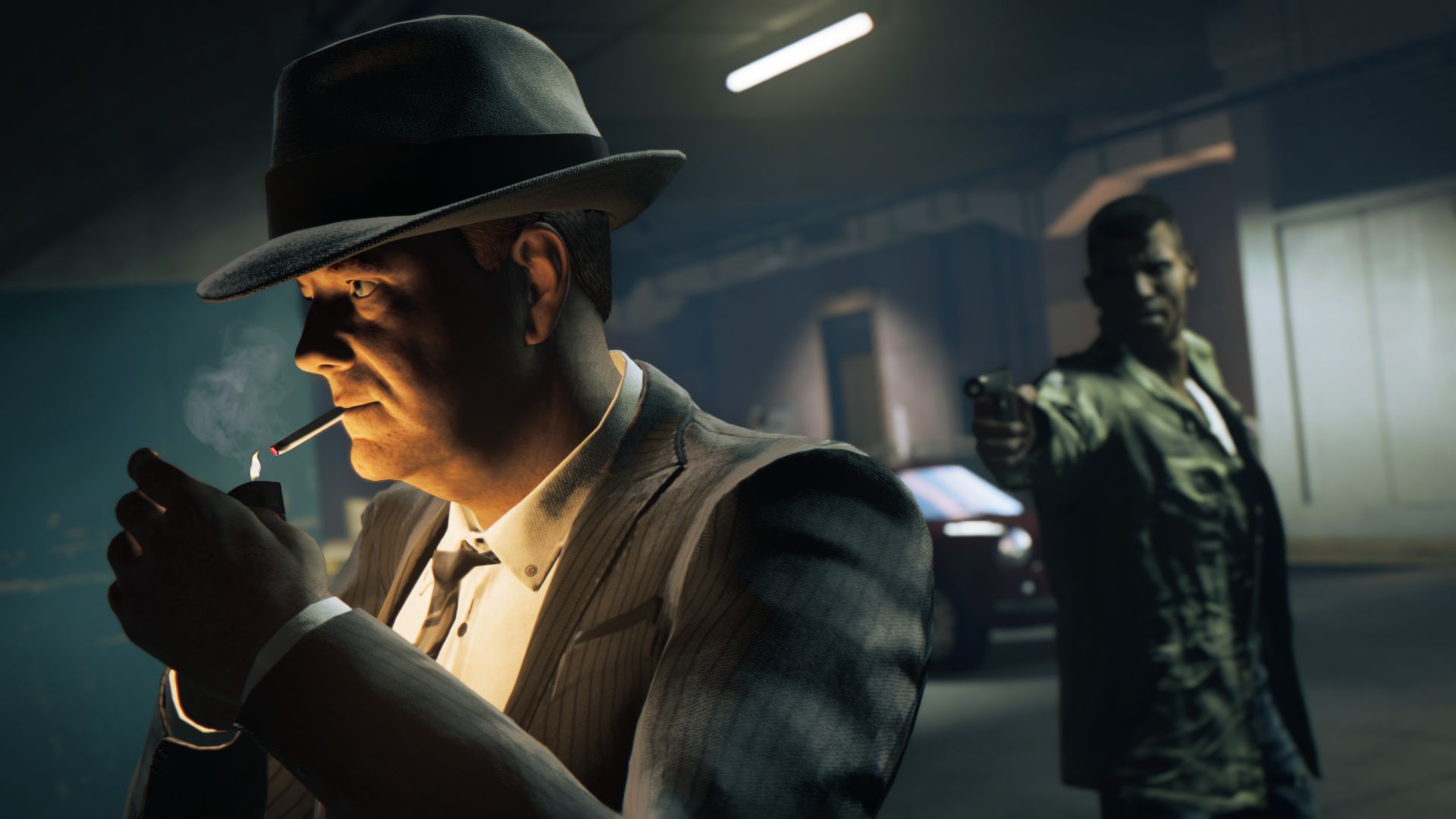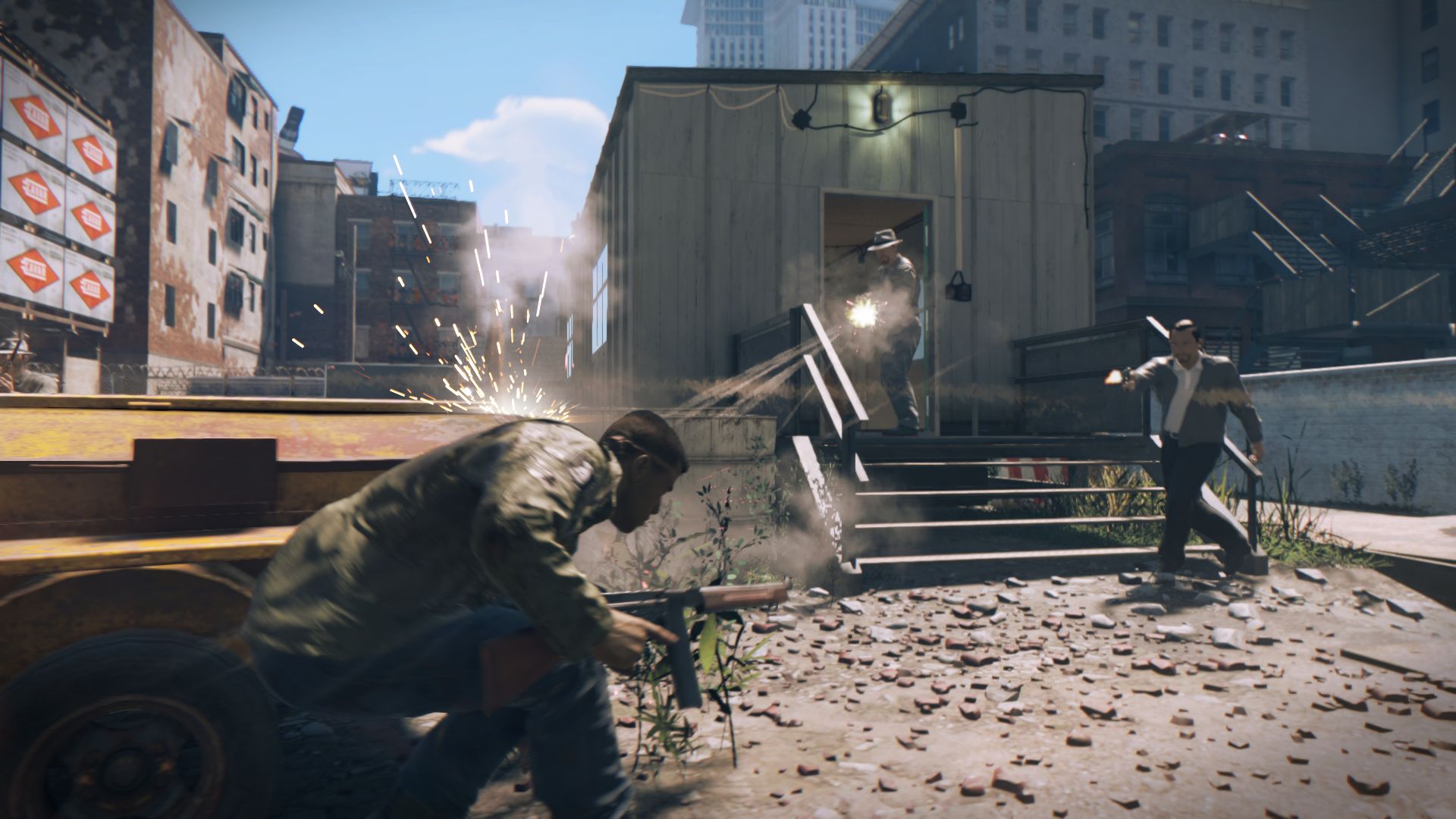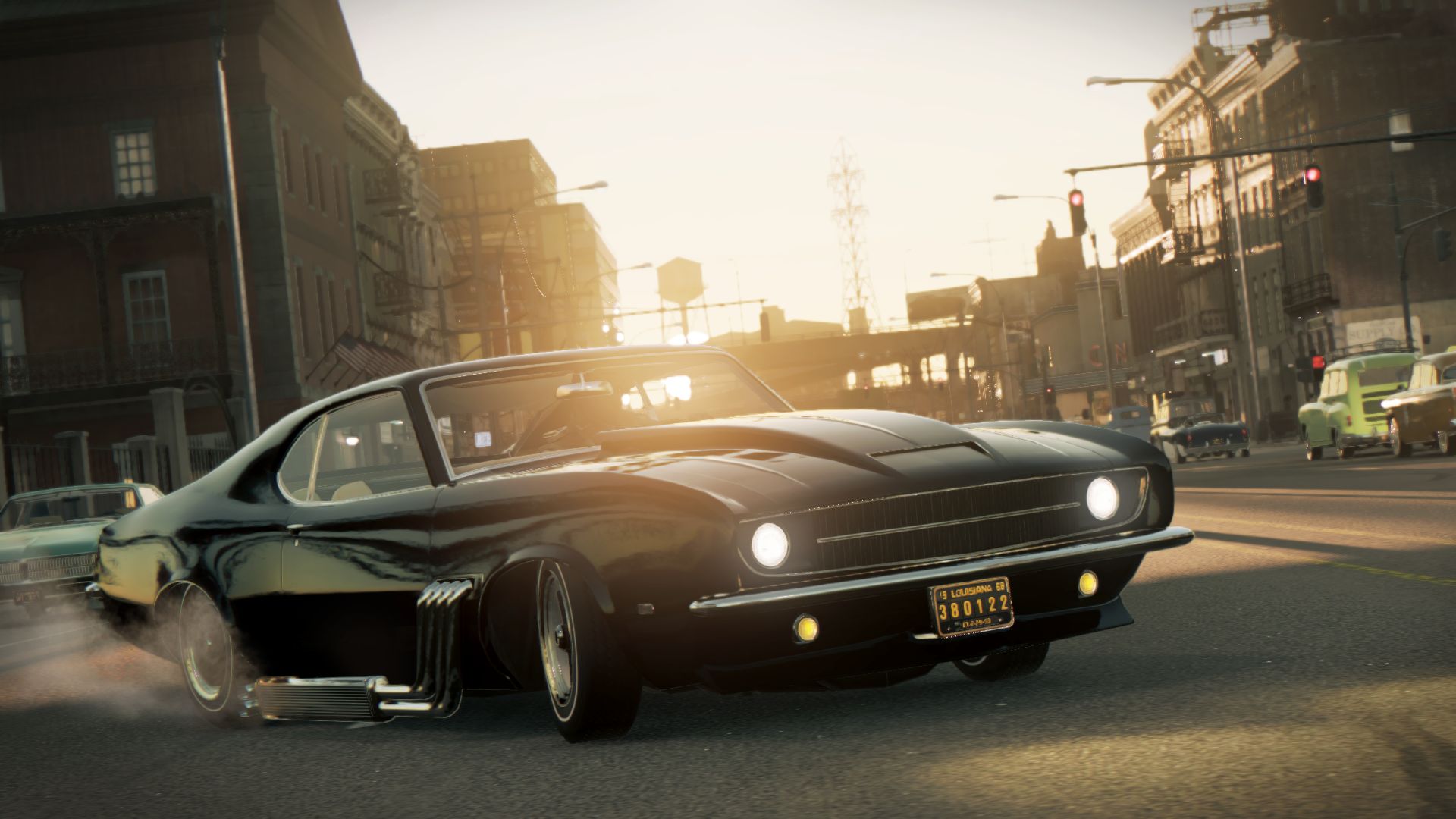Mafia 3 hands-on: loyalty and betrayal in faux New Orleans

I’m sitting down at a table with the three lieutenants helping me maintain my growing hold on New Bordeaux, Mafia III’s marvelous recreation of 1968 New Orleans. I’ve just finished the climactic mission in my bid to take down an Italian-run construction fraud racket. It was a delightful spree of organised carnage, starting with slow, quiet infiltration by way of a stolen mob vehicle and an underground car park, before rapidly escalating via an elevator to a hotel penthouse containing seemingly half of the local mob. And a showdown with their rocket launcher toting ringleader. And then I took his rocket launcher and fought my way out through the front lobby. It wasn’t neat, is what I’m saying. It got quite hectic. But this meeting right here, this is far more stressful.
In front of me are Burke, Vito, and Cassandra. Between them, they respectively run the Irish, rebel Italian, and Haitian gangs. Each time I pry ownership of a new enterprise from the dominant Italian Mafia, I need to hand it off to one of the three to run on my behalf. I’m going to be far too busy causing a mess elsewhere. But good Lord, do they get precious about it.
Neglect any lieutenant for too long, and they’re going to get angry, convinced that I’m screwing them over and tipping the balance of power in favour of one of the other two gangs. The problem is, sometimes I have to. Sometimes the perks delivered by one lieutenant in exchange for a hand-out will be exactly what I need at the time, be they new weapons, increased fire support on missions, better health recovery, or anything else from the raft of bonuses that come with long-term loyalty. Sometimes I can’t be fair. This is one of those times.
I hand the territory to the already-flush Cassandra, and Burke goes ballistic. Vito is pissed too, and his upset cuts deep as he compares me unfavourably to long lost friends from Mafia II—Vito was that game’s protagonist, and goddamnit I wish I was giving him a happier retirement—but the Irish boss is definitely the biggest problem. He tells me that this is my last chance. He tells me that if I screw him one more time, it’s all over. Although developer Hangar 13 is keeping very quiet about what this means, I strongly suspect that I might soon be dealing with more than one enemy faction if I’m not careful.

This vignette, placing the weight of real leadership on my shoulders after the high of a deliciously free-form killing spree, is typical of Mafia III. Because Mafia III has fleshed out its predecessor's rather spartan open-world not with extraneous distractions and miscellaneous malarky, but with constant options, choices, and responsibility.
Take the construction racket, for instance. That hotel assault was just the cherry-bomb on the cake. To get to that point, I had to weaken the entire organisation, reducing its income bit by bit, until I could make the big push. The means Mafia III offers to do so present a Matryoshka doll of possibilities within possibilities, each certain to reduce the mob’s finances by a certain percentage of a target sum, and each open to tackle in any way I choose. Or not.
I can take down supply trucks, either on the road as part of madcap driving battle—targeting wheels and petrol tanks at will—or by tracking them down when parked up at mob sites, casually rolling a grenade beneath before sauntering off. I can attack lower-level enforcers wherever they might conduct their professional activities, fighting through their goons before bumping them off, or aggressively recruiting them for my own empire. I can take a bigger risk by hitting a more secure location, assaulting a major, multi-tiered building site packed with dozens of well-armed mooks. That means a large-scale attack, but I’m free to use any approach, from a full-ghost stealth run to bringing in extra muscle and a boatload of guns after a couple of quick phone calls to my seconds-in-command (if they’re still talking to me). Or I can just take the direct approach, and quietly lift a large pile of cash while its owners are busy filling a building’s foundations with fresh corpses. Maybe I’ll toss a molotov while they’re distracted by business, maybe I’ll just vanish on the breeze.
Keep up to date with the most important stories and the best deals, as picked by the PC Gamer team.
The important thing to know is that none of these activities are side-quests. Hangar 13 is at pains to emphasise that everything you do in Mafia III pushes you forward. Everything is part of the core narrative, the new structure simply in place to deliver a greater sense of player authorship by way of a wider path to the end goal. That’s very welcome news to those of us who feared that the previous game’s nuanced, affecting, genuinely mature storytelling thrust might be drowned amid a push for minigames and nonsense diversions. Mafia’s new developer really seems to understand what makes the series special, and is building part three around the same key pillars of grown-up, character-driven story, sparkling historical detail, and smooth, snappy action.

That latter element is particularly apparent in Mafia’s newly malleable combat. With a satisfyingly gluey cover-system underpinning everything, both shooting and stealth feel tactile and robust. But most crucially, Mafia III gets the transition between play-styles just right. Gunplay never feels like the consolation prize for screwing up stealth. Sneaking never feels like the coward’s way out of a tough gunfight.
It’s all tremendously organic and rewarding, with sudden shifts in the action state eliciting genuine excitement rather than a swift click toward a checkpoint reset. You’ll dash from the gleeful crack-pop of one Mafia’s terribly enjoyable headshots to a close-up melee execution, and then seamlessly slink back into cover to clear another group out with a grenade. And then use the resulting disarray to vanish among crates and drywall to mop up with a more cat-and-mouse approach. Each disparate strategy feels more than just viable. It feels like the only right thing to do at the moment you execute it.
As for the series’ trademark sense of time and place, it feels like we could be in for a pretty special iteration this time around. Mafia III’s version of New-Orleans is evoked with both gloss and grit, a lazy, hazy, summertime heat permeating its streets just as bullets and foul-mouthed slurs fill the air. Speaking of which, new protagonist Lincoln Clay could well prove a worthy successor to Vito. A mixed-race member of the Black Mafia, and a Vietnam veteran by the time the game starts, he’s a clear microcosm for all of the era’s major social and political concerns.
Going off current evidence, the game’s tone seems to pull no punches, but neither is Lincoln placed on a pedestal of virtue. Tricky waters for a AAA action game to navigate in 2016, but then, Mafia has always been a more thoughtful breed of open-worlder. Bigger, and perhaps slightly brawnier, Mafia III nonetheless very clearly carries that defining family trait.

